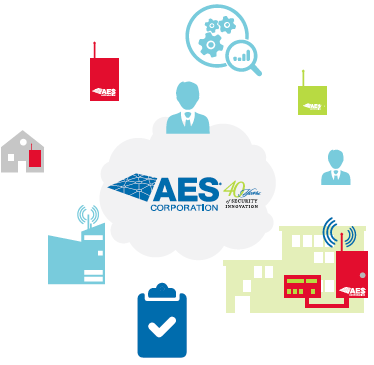Network planning is the key component in building a robust and resilient AES-IntelliNet® network. By investing the time to plan a network properly, using AES recommended guidelines, you will not only build a network that meets your needs today but also a network that is highly scalable for the future. Poor planning can result in problems maintaining and growing your network. AES has a team of experts available to work directly with alarm dealers and integrators to establish a solid game plan for both installing new networks or expanding an existing network. If you’re looking to build a new network from the ground up, ask about our enhanced AES-IntelliStart service. If you want to optimize your existing network for peak performance, ask about our AES-Network Management System (NMS). To learn more about the critical aspects of building a powerful AES network, please read our previous blog post ‘How to Build an AES-IntelliNet® Network’ by Rick Distefano, a seasoned AES veteran.
2. Test Subscriber Mounting Locations
Installers put significant time and effort into finding an ideal location to mount Subscribers. Once they’ve found what they believe to be ‘the best spot’ for the unit, they get to work mounting the unit. AES recommends a different approach. First, Installers should test all potential mounting locations. You can do this easily using an AES 7245 Network Connectivity Tool (NCT) or the actual Subscriber unit you will be installing:
|
 |
Maintaining the health of your network is crucial to its continued success in quickly delivering alarm messages for years to come, not just short-term. It is important that you are proactive in performing annual preventative maintenance on your network as you would with any other equipment.
Your maintenance checklist should include:
✓ Checking all cable termination points and connectors for corrosion and wear
✓ Verifying all connectors firmly secured in place and are not loose
✓ Verifying the integrity of all external antennas, both structurally and mechanically
✓ Testing antenna and cable performance using a Watt meter
✓ Performing failover testing on AES-MultiNet Receivers to ensure proper failover functions
Your plan should also address how to replace batteries once they have failed or met their expected life capacity. If you have not established a battery maintenance plan then now is a good time for that, too!
Want immediate access to vital network performance data?
AES-Network Management System (NMS)
- A complete end-to-end AES-IntelliNet network monitoring and management platform.
- Provides a real-time view of an AES mesh radio network through intelligent dashboards.


